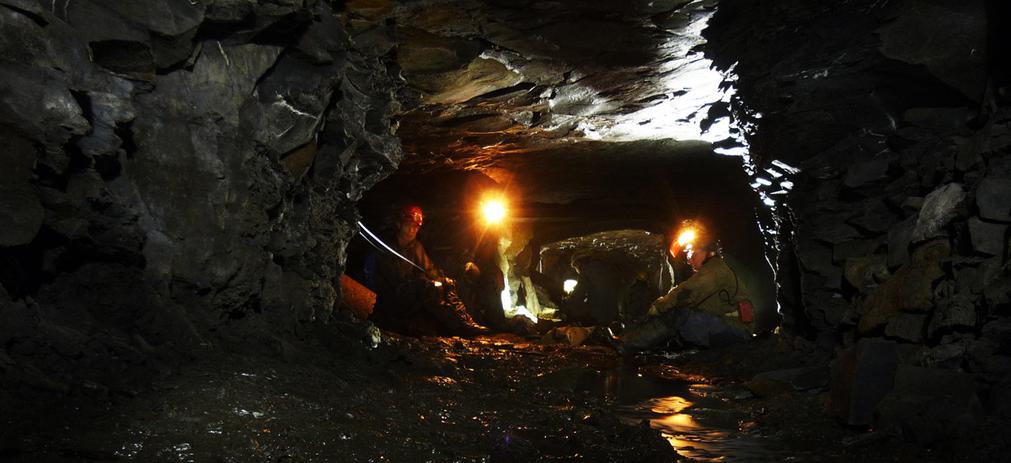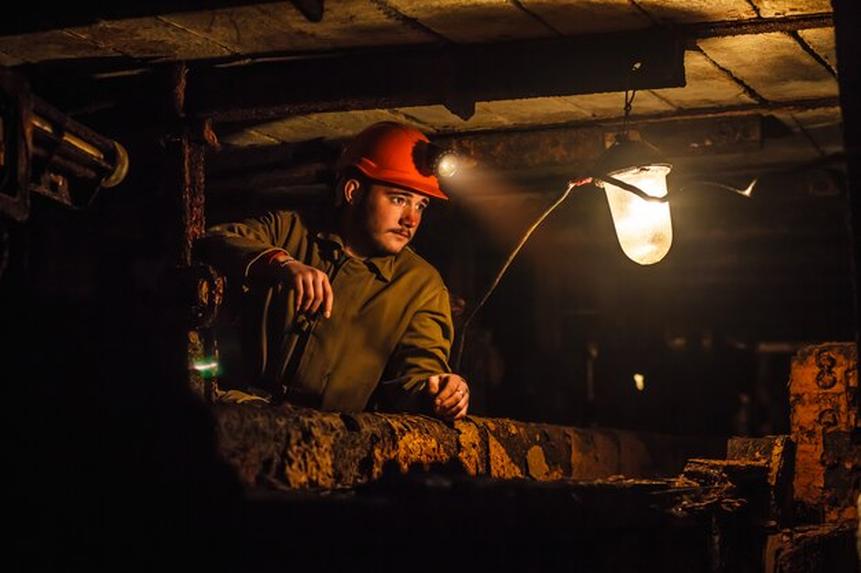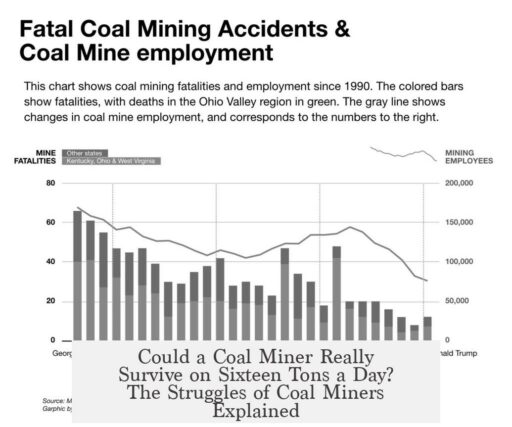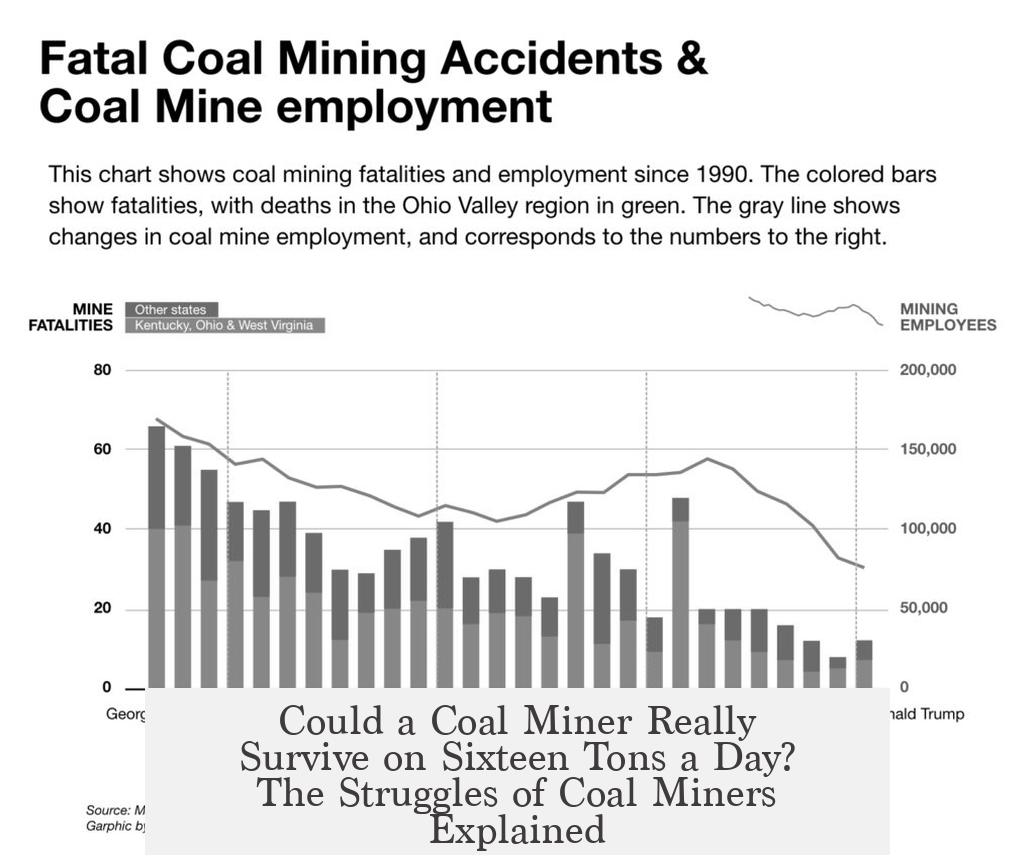A coal miner mining sixteen tons in one day would not necessarily avoid debt due to several economic factors. Miners rarely mined that much individually; 16 tons or 32,000 pounds is more likely a crew total or a machine-assisted load. Wages were low, and many miners did not receive fair compensation relative to their labor.

Coal miners historically earned modest wages for physically demanding and hazardous work. The income depended less on the amount mined than on company policies. These workers often received payment in company scrip, a currency valid only at the company-owned store. This system severely limited their purchasing power and trapped them financially.
Their cost of living was high relative to income. Miners lived in company towns, where housing rent exceeded market rates. The company owned nearly all essential services: housing, stores, and bars. This monopolistic control allowed companies to raise prices on goods excessively. Consequently, miners spent wages just to cover basic needs.

This economic scheme created a cycle of debt. Even if a miner contributed significantly by loading or mining coal, earnings rarely covered living expenses. The “sold my soul to the company store” phrase highlights this persistent indebtedness. Miners had little choice but to buy goods from overpriced stores and pay high rent, with no alternatives for cheaper supplies or housing.
Mining a lower tonnage individually, like sixteen tons, was not typical daily output. Most miners operated machinery or performed tasks supporting a collective team effort. Thus, the wage system rarely rewarded higher individual coal yields directly.

- Miners were underpaid for dangerous, labor-intensive work.
- Company towns controlled housing and stores, inflating costs.
- Payment in scrip restricted miners to overpriced company stores.
- Miners faced debt cycles despite their daily work contribution.
- Typical individual daily coal mined was well below sixteen tons.
Could a Coal Miner Mining Sixteen Tons a Day Avoid Debt? Unpacking the Reality Behind the Song
The quick answer: No, a coal miner mining sixteen tons a day would still likely struggle financially and potentially go into debt. Mining coal was never just about how much you dug up. It was wrapped up in economic traps, low wages, high living costs, and a system designed to keep workers tied to the company like fishing lines on heavy-duty hooks.

Let’s dig into why that is.
First, those famous lyrics about “sixteen tons” actually refer to loading coal, not purely mining it by hand. It’s pretty unlikely one miner could carve out 32,000 pounds of coal daily with a pickaxe and sheer grit. More probably, these folks operated machinery or were part of crews blending muscle and machine power. So, this sixteen tons symbolizes a standard workload, not some superhuman feat.

But the workload wasn’t the only monster underground. Miners faced grim economies above ground as well.
The Company Store: Your Wallet’s Worst Enemy

Ever heard the phrase “I owe my soul to the company store”? It wasn’t just poetic drama. Coal miners were often paid in company scrip—an imitation currency only usable at the company-owned stores. Imagine being handed monopoly money that only worked at one candy shop where prices doubled or tripled.
This system ensured miners spent their wages back into the company’s pockets. So, even if a miner worked hard and showed up at the company store with scrip in hand, the inflated costs meant any savings vanished faster than a top hat at a magician’s show.

Living Under Their Thumb: Company Towns and Rent
Life didn’t get any easier once miners rolled off their shifts. Most lived in company towns where the company owned everything—from their homes to the shops and even local bars. These towns weren’t quaint little towns; rents were steeper than typical market rates, trapping miners in a cycle of paying rent to the very employers who underpaid them.
Think of it like renting a tiny apartment where your landlord is also your boss and your grocery store owner. The higher the rent and prices, the less you had left over—effectively a financial noose tightening around miners’ necks.
The Hard Truth: Underpayment and No Bonuses for Extra Coal
Let’s bust a myth here: miners were not paid generously or rewarded for hauling extra coal. This work was filthy, dangerous, and downright exhausting. Yet, wages barely reflected these hardships. Pay didn’t fluctuate much based on performance or how much coal was extracted, which erased any potential incentive.
The miners’ wages were paltry and rarely left room for improvement. Hence, even grinding out sixteen tons a day might not put a dent in the bills or build a safety net.
The Full Monopoly: Control Over Life and Money
Mining companies had a near-total stranglehold over miners’ economic lives. Owning the housing, the stores, and the entertainment spots meant they controlled the cash flow inside the town. Costs were marked up everywhere. So, workers could hardly squirrel away enough savings to get a better job or move elsewhere.
It was a system designed to keep miners economically cornered. The idea was, if you saved and tried to change your lot, the companies’ inflated costs would block your escape.
So, how did they survive?
Honestly, just barely. Many miners were indebted to their companies through the scrip, rent, and overpriced goods system. The “sixteen tons” line is more than just a song lyric; it’s a shorthand for a life where hard work didn’t equal fair pay. Debt hung over miners like a thick cloud, a lasting shadow of economic exploitation rather than mere bad luck or poor work habit.
Want Some Perspective?
Think about today’s minimum wage workers. Much like coal miners then, many earn wages that don’t cover rent, food, and other basics. Yet, they don’t have their employers controlling every expense. Mining companies had this “vertical monopoly” on miners’ incomes and lives, making going into debt rather a rule than an exception.
Key Takeaway for the Modern Ear
The next time you hum “You load sixteen tons, what do you get? Another day older and deeper in debt,” remember—it’s not just catchy music. It’s a snapshot of an era when the sweat of a miner filled the company’s pockets more than his own family’s. The sixteen tons symbolize backbreaking labor, economic captivity, and an unfair wage system, not just coal volume.
So, if you ever ask: would mining sixteen tons a day keep a miner out of debt? History says, not a chance.
Closing Thoughts
Coal mining in the past was less about the coal tonnage and more about who controlled the money. Workers were paid low, lived under company-owned roofs, and bought overpriced goods with worthless scrip. All of this meant debt wasn’t just probable— it was practically guaranteed.
While modern mining jobs vary widely, understanding the economics of old coal mining sheds light on labor struggles and the significance of fair, transparent wages and independent markets.
Curious about modern mining wages or how payscale reforms changed miner lives today? That’s a journey for another post—but for now, the lesson’s clear: the song’s catchy chorus captured a harsh, real economic trap.




